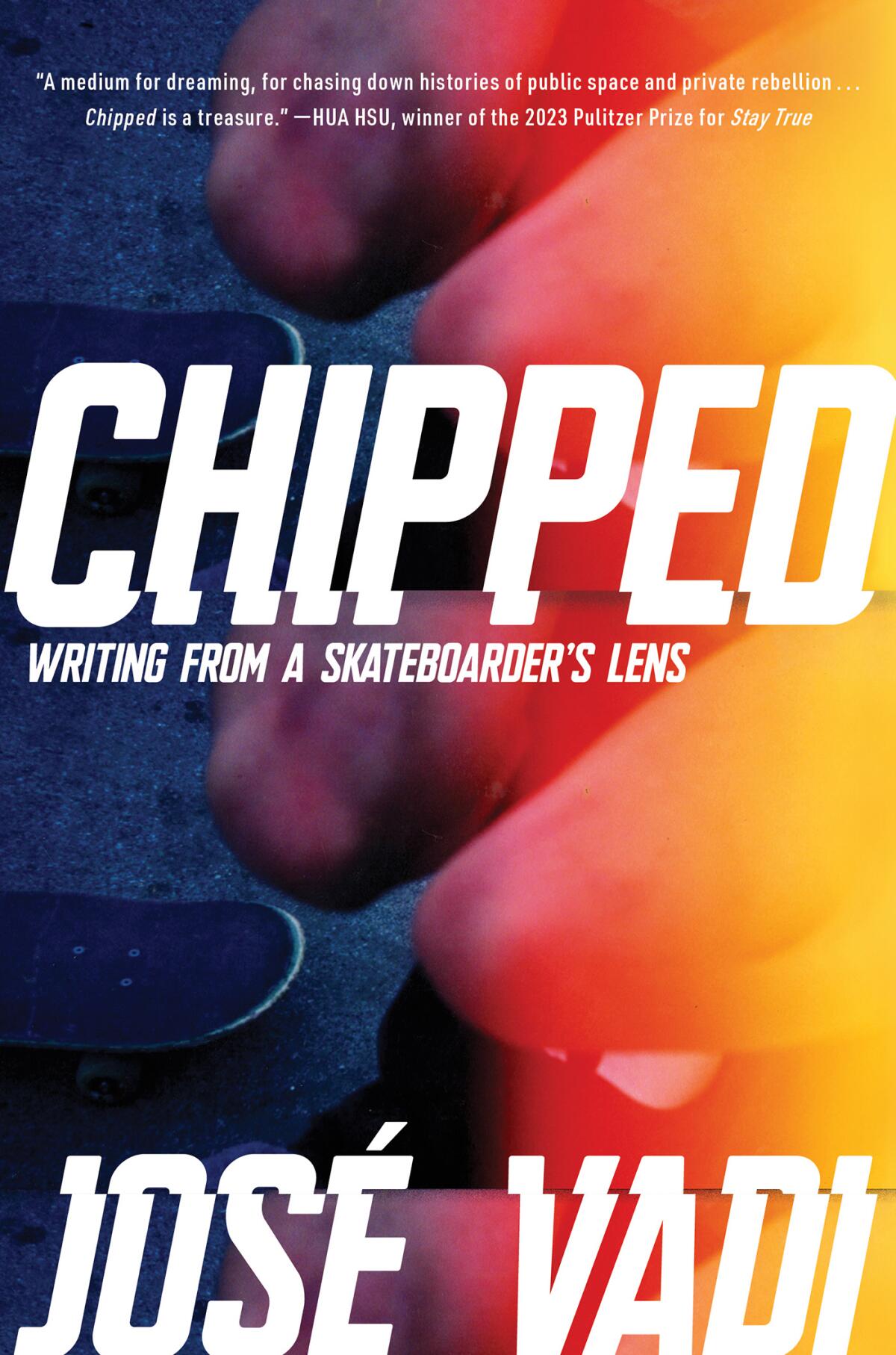-
24-year-old Bath funeral director trying to change “perceptions” - 22 mins ago
-
How Many Points Did Bronny James Score in Lakers NBA Cup Win Over Spurs? - 41 mins ago
-
TikTok Parent ByteDance's Valuation Rises to About $300 Billion - 42 mins ago
-
Mexico head coach Javier Aguirre bloodied by thrown can following loss to Honduras in Concacaf Nations League - 43 mins ago
-
Body found in boot in Ilford after concerns for Corby woman - 47 mins ago
-
Sixth typhoon in a month makes landfall in Philippines - 50 mins ago
-
Ukraine Destroys Putin’s Prized $10M Air Defense System - 56 mins ago
-
Jake Paul beats Mike Tyson: Millions tune in for much-hyped bout on Netflix – National - 58 mins ago
-
iQOO Neo 10 Series Pre-Reservations Begin; Design Teased - about 1 hour ago
-
‘Best-in-class’ stocks are surging so buy them quick, Bank of America says - about 1 hour ago
From Pomona to Oakland, a skater maps California from his board
Book Review
Chipped: Writing From a Skateboarder’s Lens
By José Vadi
Soft Skull Press: 256 pages, $26
If you buy books linked on our site, The Times may earn a commission from Bookshop.org, whose fees support independent bookstores.
José Vadi’s “Chipped: Writing From a Skateboarder’s Lens” is, literally, a collection of essays. But it’s also a map of Vadi’s personal California.
From Pomona, where he was raised, to the Bay Area, where he lived until recently, “Chipped” charts the state’s urban spaces as seen from the back of a board, a network of routes traced block by block by block. Vadi’s vision of the neighborhoods is granular.
“Off I went down Broadway and towards the bike lanes connecting Rockridge with neighboring Temescal, from 51st to 40th streets,” he writes of one skate session. “Responding to every crack, car, stop sign, smell, and sound around me.”
The specific geography may not be familiar to every reader, but the mode should resonate with longtime Californians. Joan Didion once wrote of her own native territory, around Sacramento, that “when we talk about sale-leasebacks and right-of-way condemnations we are talking in code about the things we like best, the yellow fields and the cottonwoods and the rivers rising and falling and the mountain roads closing when the heavy snow comes in.”
For his part, Vadi conjures California’s charms through descriptions of invitingly empty parking lots, curbs perfectly waxed for skating, perilously designed intersections and the shimmering temptation of stairways and railings.
For Vadi, skateboarding isn’t just a sport or a hobby, it’s “a discipline, a practice, a ritual.” It’s also a portal, bringing him into contact with the ungoverned and unfamiliar by allowing him to navigate the world on his terms.

José Vadi, author of “Chipped: Writing From a Skateboarder’s Lens.”
(Bobby Gordon)
That kind of exploration can be dangerous, especially if you’re not white.
“When a Brown kid starts skateboarding in any era they are entering a policed world that presumes their guilt, accelerated now by the four wheels propelling them, sometimes illegally, down city streets, schoolyards, back alleys,” he writes.
But the adventures that skateboarding facilitates can also be gateways to freedom and self-knowledge.
“Going to [live music] shows and skateboarding came around the same time for me, finding the spaces on the street and the venues that mattered to me because I knew each space contained a worldview,” Vadi explains. “Cities are invitations to parts of ourselves that we always knew but couldn’t access without such introductions.”
“Chipped” is just as much about the art and culture that surrounds skateboarding as it is about the act itself. Vadi reminisces about the music he learned from skate videos as well as the videos themselves, compilations of skaters’ best tricks — and, of course, some of their gnarliest falls. He name-drops iconic shoe and clothing brands — Emerica, Dickies, Airwalk — as well as the skate magazines, like Thrasher and Transworld Skateboarding, where he found out what the best skaters were wearing.
Another facet of the broader subculture is the “skater’s lens” that the book’s subtitle promises: a sense of radical self-sufficiency, a jaundiced eye toward what constitutes “public space” and what’s allowed in it, a familiarity with pain and a coolness toward danger.
But it isn’t enough just to live that lifestyle; Vadi finds that he needs to make something with it too. The book’s final essay, “Programming Injection,” focuses on a short-lived column of the same name that ran in Transworld Skateboarding in the ’90s. In it, the skater Ed Templeton asserted that “documentation is domination,” and a young Vadi took it as gospel.
Skateboarding may be an Olympic sport now, but most of its practitioners still do it on the margins, repurposing urban architecture for their own ends. Its joys are typically fleeting: A perfectly landed trick becomes iconic only if the moment can be captured, repeated, spread and shared. Skateboarding as Vadi understands it is an act of defiance, a story that isn’t usually written. Part of what makes his documenting it powerful is the proof that a life like this is possible.

“Chipped” bears the marks of everything Vadi learned on his board. His prose is often vivid and propulsive, describing “benches so waxed they were black slabs of former white concrete, generations of candles melted by the sun and grinded into iconography.” Of course, sometimes his velocity gets away from him, as when he calculates that a skater’s path is “carved by a body’s response to space divided by desire of direction multiplied by necessity.”
Vadi does his best to make “Chipped” accessible to non-skaters, describing the basic mechanics of tricks such as ollies and slappies. But if you’re unfamiliar with the sport, it’s best read alongside some of the videos he cites — all of which probably exist on original VHS somewhere but can also be found, in all of their charmingly lo-fi glory, on YouTube. There you can see not only the mechanics of the tricks but also the remarkable integration of skaters with their landscapes. Cars pass through shots and threaten to collide with the aftermath of blown tricks; pedestrians gawk and sometimes get in the way.
In skating, Vadi found “a compass, a lens, a portal to joy only found by trying.” “Chipped” offers the same even to those of us who have never stepped onto a board.
Zan Romanoff is a writer and the author of several novels for young adults.
Source link






























